I used to love having a touch of old-fashioned charm in my garden, and I chose foxgloves. Do you know foxgloves? They have beautiful bell-shaped flowers, just like coming out of a fairytale.
They are not only gorgeous, they are also extra easy to grow if you know a few tricks. And now, if you are interested, let's learn how to grow and care foxglove.
Pick A Variety of Foxglove for Your Garden
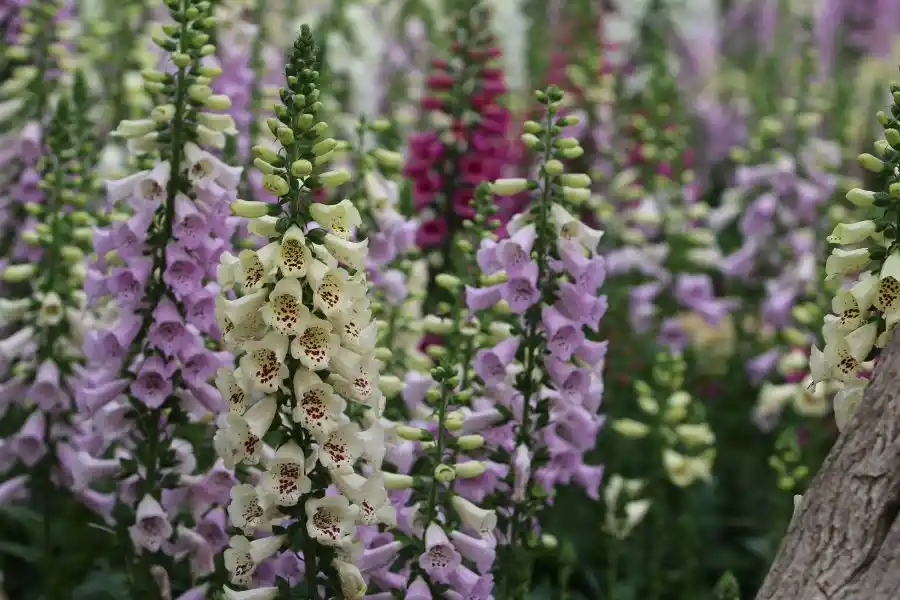
Trust me. It's exciting to pick up different types of foxgloves. Some are in bright yellows, some are in soft pastels, while others show off bold spotted petals.
The best part I love when growing foxgloves is that they draw a lot of pollinators. You know, my garden is busy with bees, butterflies, and hummingbirds in the long summer.
I’ve tried quite a few varieties. And I sum them up in this handy table to help you easily select your favorites:
| Variety | Flower Colors | Zones | Quick Note |
| Camelot Series | Pink, purple, rose, white | 4-9 | Large, trumpet-shaped blooms. Great hybrid for most gardens. |
| Digitalis purpurea | Purple | 4-8 | Classic European native. Tall spikes, timeless cottage look. |
| Excelsior Series | Pink, purple, rose, white | 4-9 | Big, showy tubular flowers. Another great hybrid choice. |
| Illumination Series | Bright yellow | 4-9 | Bold yellow spikes. Adds a sunny splash to any corner. |
| Pam’s Choice | Deep rose-pink | 4-9 | Rich, dramatic color on tall spikes. |
| Silver Sentinel | Creamy white | 4-9 | Elegant, soft-toned flowers. Perfect for moon gardens. |
| Dalmatian Series | Yellow, white with brown/black spots | 4-9 | Spotty blooms. Quick to flower and super eye-catching. |
| Apricot Beauty | Soft apricot | 4-9 | Gentle, warm tone. Beautiful in cottage or wildflower beds. |
| Yellow Flare | Bright yellow | 4-9 | Bold and cheerful. Great for sunny, bright garden spots. |
| Polkadot Series | Pink, purple, white with brown/black spots | 4-9 | Playful dotted petals. A fun, modern twist on a classic. |
My warning:
Foxgloves are toxic. Even deer keep away from them because of the toxicity, as well as those hairy leaves. So, if deer are a troublemaker in your garden, try to grow some foxgloves.
How to Grow Foxgloves
If you want to see those tall and elegant spikes of color, you need to give them the right spot and some attention. Here’s where foxgloves will be happiest:
Where to Plant Foxgloves
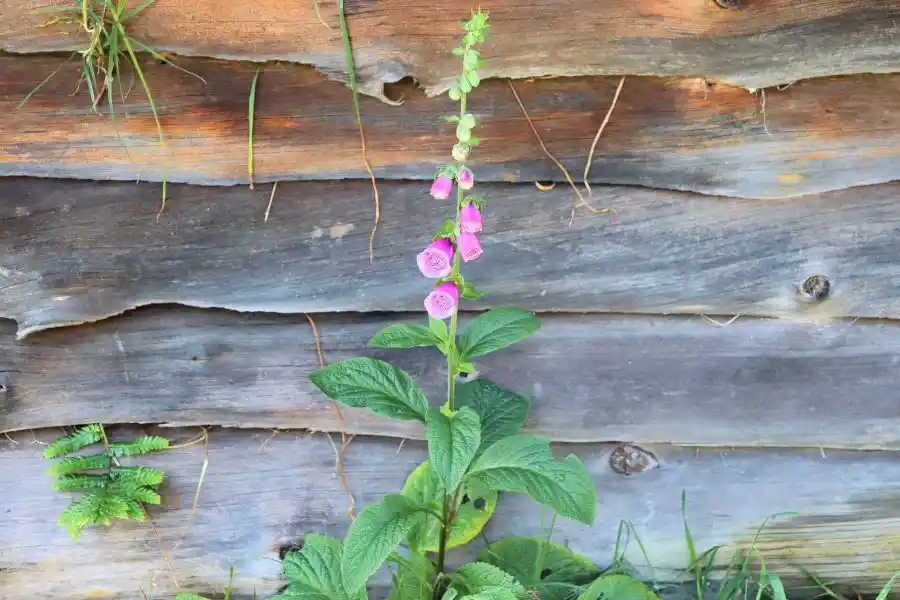
- They love dappled light, light morning sun, or afternoon shade. I always avoid placing my floxgloves under harsh sun. The heat can burn the leaves and fade the blooms.
- Foxgloves love loose soil rich in organic matter. I make sure to place them in well-draining and “not soggy” soil.
- My experience – Always protect your foxgloves from strong winds. They have tall stems and can break in strong gusts of wind. I place mine near a wall, other sturdy plants, a fence, or a stake for support.
- Grow your foxgloves in pots. Why not? You should pick shorter varieties. My patios or balcony look extra stunning with pots of foxgloves.
When to Plant Foxgloves
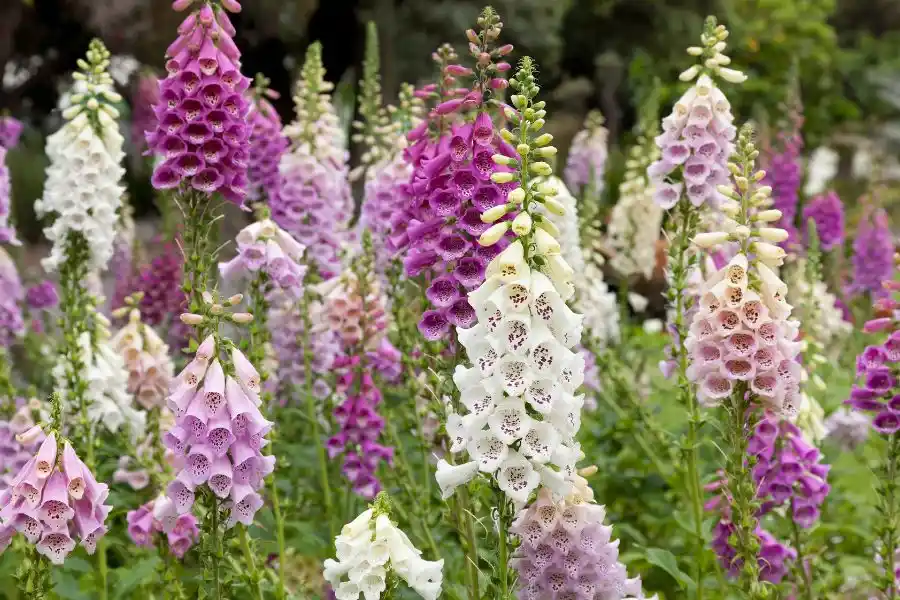
I’ve found that the best time to plant foxgloves depends on where you live. In mild weather, you can grow foxgloves in early spring, right after the last frost.
In a cold climate or a hot summer, plant them in the fall. This lets their roots have a chance to grow strong before the winter visits.
Grow Foxgloves From Seeds
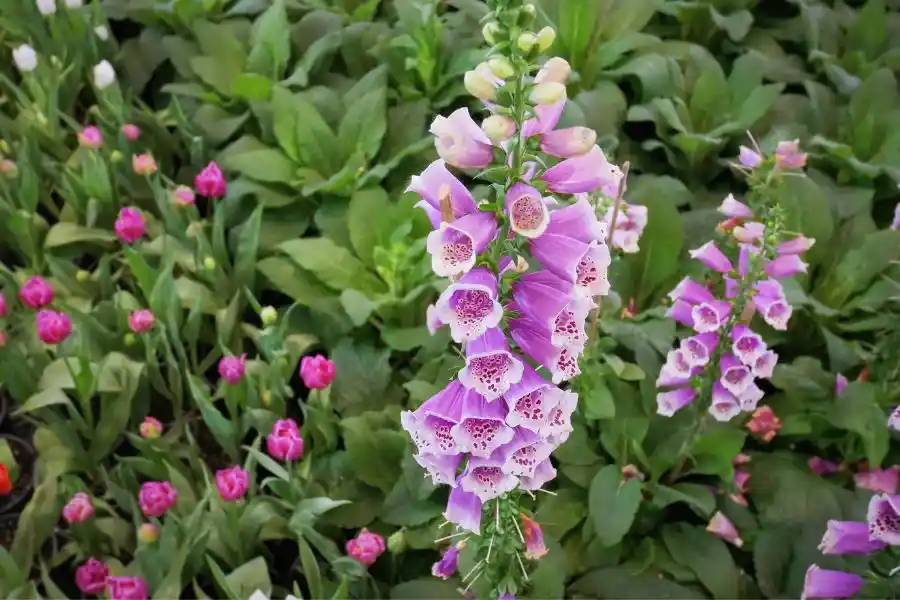
Growing foxgloves from seed is not so tricky. I've planted foxgloves many times, and here's how I do it:
- As I told you above, pick the right time to grow foxgloves depending on your place (spring after the frost or fall)
- Soak the seeds for 24 hours in water to encourage them to sprout.
- Prepare the soil. I like to mix some compost into the soil to give my plants the best start.
- Then, I scatter the seeds on top of the soil, press down gently, and cover them lightly with soil.
- Water carefully. Foxgloves love moist soil but never soggy.
- When those seedlings grow big enough, I will move them to their permanent home.
You need to be patient. I learned that it can take weeks (sometimes even 3 months) for those seeds to germinate.
How to Care for Foxgloves
Caring for foxgloves isn’t fussy at all — in fact, it’s one of those plants that thrives if you give it a little attention and the right location. Here’s what works for my foxgloves:
Give Them A Lot of Light

Foxgloves enjoy partial shade. In my garden, I place them in areas that receive early sunlight and some afternoon shade. If you live in a cooler region, you can get more sun without any problems.
Grow Them in Rich & Well-draining Soil
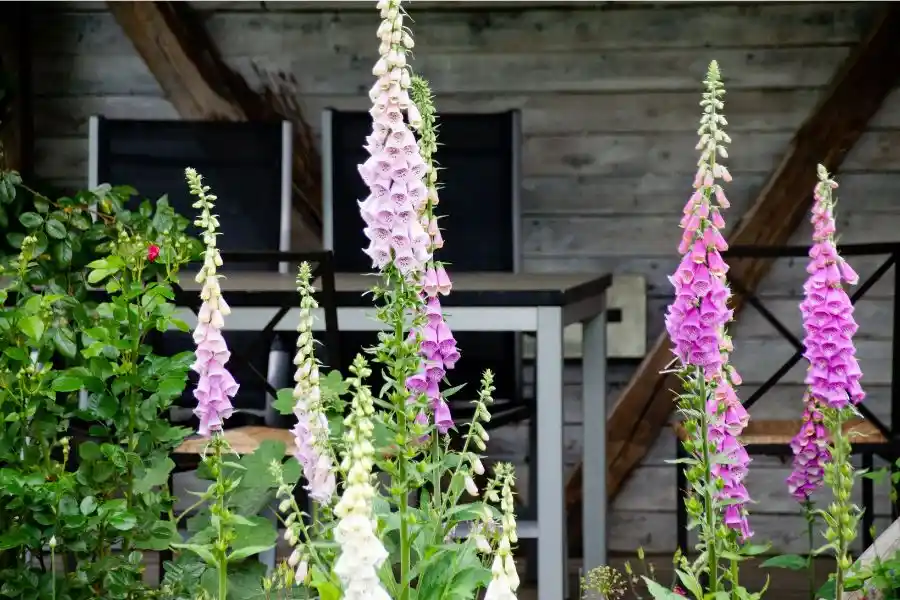
Foxgloves need feeding to grow strong and give beautiful blooms. I always mix in compost or leaf mold before planting.
Water Them Regularly
Foxgloves dislike sitting in moist soil, but they enjoy a steady drink. To make sure the soil stays just moist enough, I check mine every few days, especially during hot weather.
Feed Foxgloves
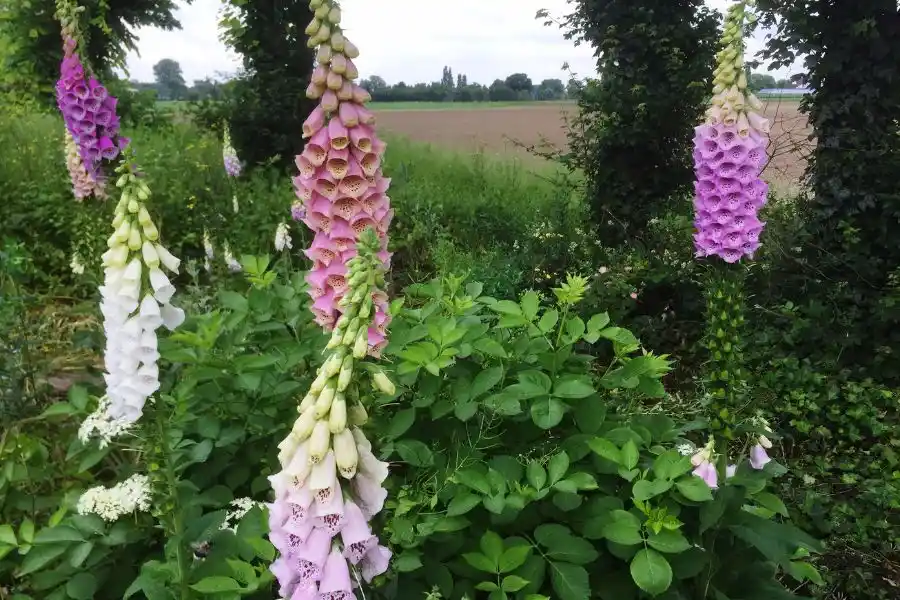
Foxgloves dislike sitting in moist soil, but they enjoy a steady drink. To make sure the soil stays just moist enough, I check mine every few days, especially during hot weather.
Feed Foxgloves
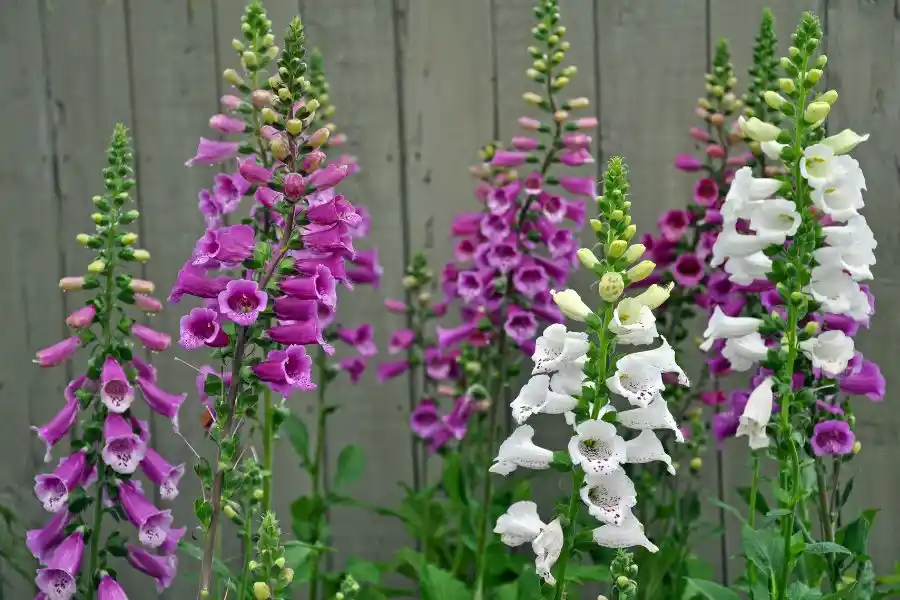
When new growth begins in the spring, I apply a balanced organic fertilizer at the base of my foxgloves. However, not too much. Too much food results in more leaves but fewer blossoms.
Prune Foxgloves
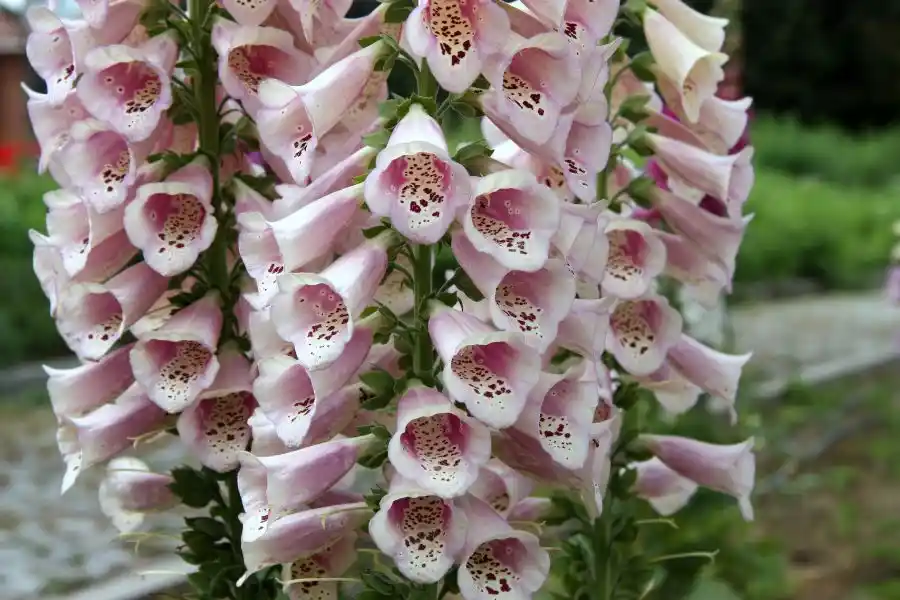
I prune the tall flower stems back once the blossoms have faded. This will keep things neat and sometimes promote a second flush.
| My Tip: I leave a few seed heads and give them a little shake in fall. It works like a charm to get new foxglove plants the next season. |
Pests & Diseases
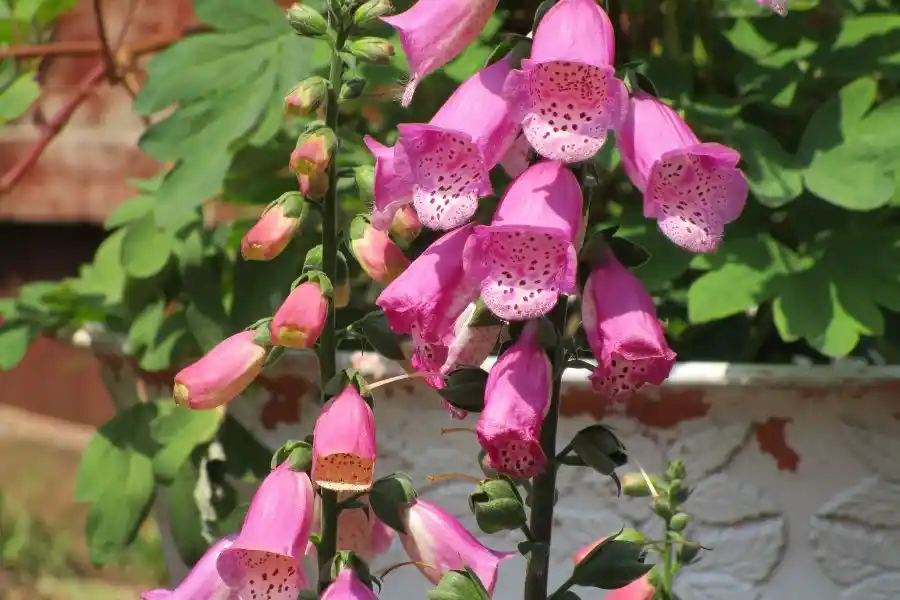
Aphids, snails, and slugs may appear. I frequently inspect my plants, removing any pests by hand or spraying them off with water if they get too aggressive.
Powdery mildew is a disease that I often find on foxgloves. It makes the plants weak and prevents them from blooming.
Propagate Your Foxgloves
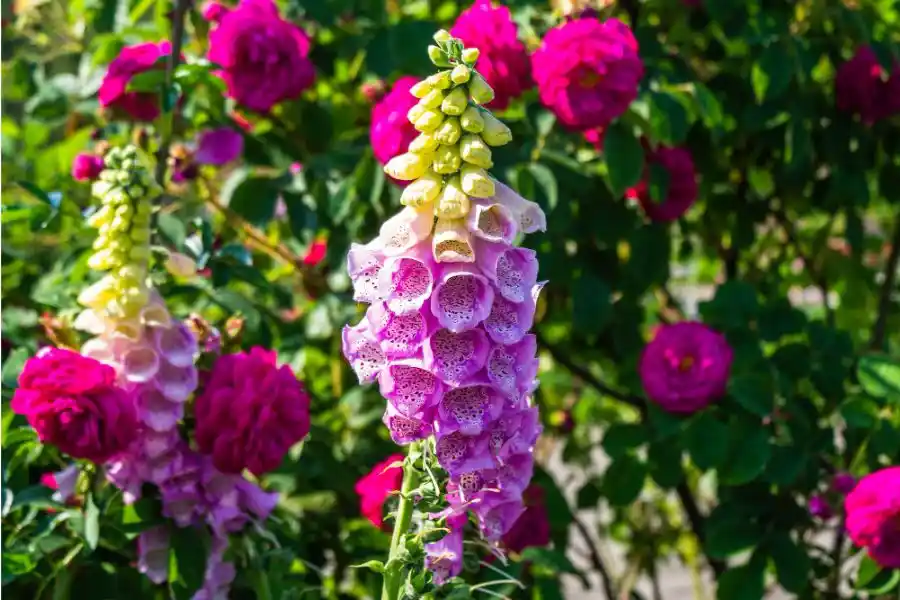
You can propagate foxgloves by digging up and separating their mature clumps in the fall. Additionally, you can start new plants in the spring by gathering seeds in the summer.
It's an easy and fulfilling way to add even more of these beautiful flowers to your garden.
Summary
Foxloves will never disappoint you. These beautiful, colorful towers will bring a wild and romantic touch to your garden. Now, you know how to grow and care foxglove, why not grow some? You just need to start, and foxgloves will reseed themself year after year.











